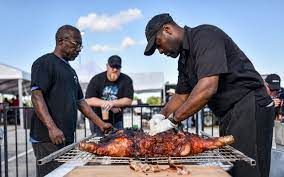
WHAT IS JUNETEENTH?
Although it has been celebrated for over 150 years, many people are still not familiar with the holiday of Juneteenth. The name is a contraction that is short for “June nineteenth.” June 19, 1865 was the day that enslaved people in Galveston, Texas, learned that the Civil War had ended and that they were free.
A LITTLE MORE HISTORY:
If you paid attention in history class you might be thinking, “That can’t be right; the Emancipation Proclamation freed the slaves in 1863.” That’s true, sort of. While the Emancipation Proclamation did decree that all enslaved people in states in rebellion against the Union “shall be then, thenceforward, and forever free,” the proclamation only applied in places under Confederate control and not to slave-holding border states nor to rebel areas that were already under Union control. Furthermore, the proclamation was very difficult to enforce, especially in areas that remained under the control of the Confederacy. Many living in Confederate states did not recognize President Lincoln’s authority and simply ignored it. Others fled west to states like Texas where the proclamation was less likely to be enforced.


FROM TEXAS TO THE REST OF THE U.S.
After the conclusion of the Civil War, celebrations of emancipation for formerly enslaved people began to take place throughout the country. In fact, the town of Gallipolis, in southern Ohio, held one of the earliest of these celebrations in September 1863. Each state held its own commemoration marking the day that it recognized emancipation. Some of the largest celebrations were in Texas, particularly in Galveston, where formerly enslaved people and their descendants continued to return year after year to participate in the celebration.
As might be expected, there are some reports of white landowners interrupting the celebrations to demand that laborers return to their work. However, historical records indicate that most allowed workers to take time off for the occasion and some even donated food or money for the festivities. The celebrations flourished for decades within the African American community but were given little attention by other groups. Observance declined sharply during the Great Depression as people had less resources to contribute for the occasion and employers were less inclined to give people time off. Juneteenth celebration gained popularity again starting in the 1960’s as a result of the Civil Rights movement. In 1980 Texas became the first state to officially recognize an emancipation celebration by declaring Juneteenth to be a state holiday. Other states followed suit. Today Juneteenth is recognized as a state holiday or public observance in 47 states and the District of Columbia. There also is a growing movement to recognize Juneteenth as a national holiday
WHY JUNETEENTH MATTERS TODAY
For people whose ancestors were owned as property and counted as only three-fifths of a human being, the fight to be recognized as full citizens, fully human, and deserving of equal respect has been long and difficult. And it is not finished. Emancipation from enslavement was a major step forward. Over time Juneteenth has come to represent more than just emancipation. It now also is a celebration of African American achievement, history, and culture. Celebrations today often aim to encourage continuous self-development and respect for all cultures.

HOW JUNETEENTH IS CELEBRATED?
Traditionally Juneteenth celebrations took place in rural locations and on church grounds because these were places readily available. Today celebrations are often held at private residences, at churches and community centers, and in parks. Outdoor activities such as rodeos, fishing, barbecuing, and baseball games are frequently parts of Juneteenth festivities. Food plays a central role in most Juneteenth celebrations. In the past the abundance and high quality of the food available at the celebrations was seen as a reflection of the importance of the occasion. People prepared special dishes and splurged to buy meats that they could not afford to have for everyday meals. In addition to continuing the tradition of barbecuing, modern celebration often include red foods (symbolizing the blood that has been shed in the struggle for freedom and the resilience of the African American people) such as strawberry soda, watermelon, and red velvet cake.
Juneteenth celebrations almost always include a component of education and self-improvement. Notable community figures are invited to give speeches and elders are invited to share the stories of past events. Prayer services are also included in many Juneteenth events.
Mary M. Kreitz, LPC, CDCA has over twenty years of experience working in the field of behavioral health. She is currently the lead therapist for the
Trauma Program at
Child & Adolescent Behavioral Health, is a member of the Stark County Trauma and Resiliency Committee, and is a member of the Unity Coalition to Dismantle Racism in Stark County.
RECENT POSTS












